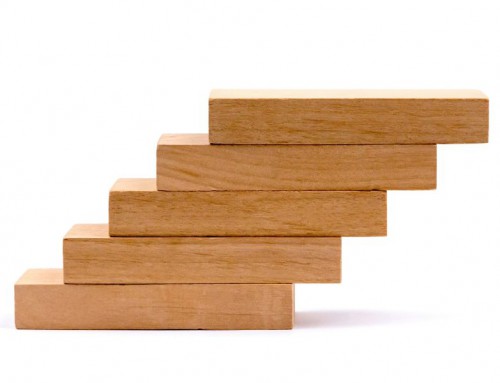Most people when looking for a landed property would often face the same question. Should they buy an old landed property, tear down and rebuild it, buy one that is perhaps relatively decent and spend money renovating it or to purchase one that is brand new and ready to move in. Let us dive deeper into these options to understand which of these three options is best suited for you if you are looking to purchase a landed property.
Option 1: Buy an old landed property, tear it down and rebuild it
In official terms, this is a new erection or redevelopment and you would most probably guess that this is going to be the most tedious of the three options. There are many factors that need to fall in place and you have to have some knowledge as to how to do this if not this is going to be a really tedious and potentially messy process for you.
You need to look for something that is really old
Simply put, you are not going to tear down a 3 storey house to build another 3 storey house. You want to purchase a run-down single storey house at a low enough entry price to make this all worthwhile. Older houses should cost less than done up properties. For example, an old single storey inter terrace in district 19 or 20 may cost you in the region of about $1.8 million whereas a brand new 3 storey terrace should cost about $3 million onwards.
You need to look for something that is really cheap
This is to add on to the previous point. If a that same inter terrace were to cost close to the cost of a 3 storey terrace, it would not make sense to purchase that property and go through the hassle of redeveloping it, would it? There are many listings out on the market which are over and above the fair market price for run-down houses. These are the type of listings you should not be looking at.
So why then would you go through this hassle of rebuilding your own landed property?
You can design the house to your specific needs
Everyone’s dream home is different. Some may want a large family area in the attic, others may want to build a property whereby it serves multi-generations in a family. Going into a done up property, there is something that you perhaps would build differently if you could be involved in the building process. Starting from scratch would provide you with the blank canvas to tailor the layout of the property to your liking.
It should cost you less than paying for an already completed unit
The cost of rebuilding is rather dependant on the complexity and the type of materials used. If you are not looking to rebuild an extremely fancy house and you use rather cost-effective materials, you can most probably build a property cheaper than what it would cost if you bought a similar, completed one in the open market. For starters, you will only be paying stamp duty on the run down property which you purchased. In certain cases, you may actually be forking out much less by choosing this option.
Before you decide to embark on rebuilding your own landed property, you may want to consider these factors.
This is extremely time-consuming and possibly frustrating process
Whatever the case, you are most probably not rebuilding properties for a living. Neither will you do it so often that we will become familiar with the process. That being said, your architect or contractor would be handling most of the coordination work. However, it is often difficult to take a hands-off approach on a project which involves your family home. There are many instances whereby your opinion will be sought and when it comes to the selection of materials, your time and input will be needed. This means time off from work and possibly loads of phone calls and emails to and fro with your architect or contractor. Despite the fact that some opt for a turn-key solution whereby one contractor seemingly handles all coordination for the homeowner, the reality is that it is extremely rare for the rebuilding process to go entirely smoothly and hassle-free.
You will need to look for alternative accommodation for a year or two
Due to the Additional Buyer’s Stamp Duties (ABSD) and Total Debt Servicing Ratio (TDSR) which are in place, most would have to sell their property in order to purchase this run down property to start the rebuilding process. This may mean that for a period of time, perhaps a year or two, you would have to either rent or look for alternative accommodation.
You need to be prepared for changes along the way
In construction lingo, they are called variation orders. They come about for a variety of reasons but mainly they add cost to a construction contract. Thus you need to be prepared that the price quoted is not the final price. There should be provision for this in your contract with your architect or contractor.
You need to be prepared when things do not turn out the way you planned
The reality is that drawings and the final product may have variations. Thus you can plan for your dream home but do try to manage your expectations as the completed project may not be exactly what you imagined. That being said, it will be very close to what was planned if you have a good architect and contractor. My advice to you is that you are trying to recreate drawings. If you need to see the product before making a decision then you would be better off buying a brand new landed property. Most buyers are attracted to a final product. This, in my opinion, is one of the reasons why new project launches sell better than resale properties. When properties are new and done up in the case of show flats, it is easy to attract buyers.
In a nutshell, this is the most time consuming and possibly frustrating option out of the three. Few take this option as they cannot deal with the hassle.
Option 2: Buy a landed property that is relatively decent and spend money renovating it
This is perhaps an option somewhere in between rebuilding and buying a completed one. Depending on the condition of the house, you can either renovate the property to make it new and or perhaps make extensions or add an additional level.
The house should have enough space for your family
Generally, you should be looking for a 2-storey house, perhaps three rooms on the second level and one on the ground level. You renovate the internal of the whole property and this might take about two months to complete.
The house would cost somewhere between a run down single storey and a brand new property
Cost wise you would be paying a bit more for a 2-storey house but then it may be a bit dated. The property may have had its last major renovation decades ago. You would not require an architect but merely an interior designer or general contractor to renovate the property. Similar to what you would do when renovating an HDB flat or condominium.
You can probably add an additional level or extensions to the house
Structurally, it should be sound. An engineer and an architect should be able to advise. In some cases, you may be able to add an additional level or attic to the 2-storey house. This may allow you to have an additional family area or an additional room or two on the additional level. Do bear in mind that this may cost a lot more than just renovating a 2-storey house. This process is called additions and alterations to a landed property. It would take significantly longer than renovating a property but still shorter than redeveloping a brand new property. You may also choose to add extensions to the property to better cater to the needs of your household.
You would need some alternative accommodation depending on your scope of works
If you were to add an additional level or do extensions, you would probably need to find a place to live for six months to a year. If you were to do major renovations, you could probably try to get an extension from the buyer of your previous property for about two to three month.
Option 3: Buy a brand new landed property
If you are the type that like to be hands off when it comes to buying a property then this is most probably the option for you. You can probably see the actual property before purchasing it. You can see and decide whether the property is suitable for you and your family. Upfront cost wise, this would be the most expensive of the three.
You may still need to do some minor renovations to make it move in
Like a new condominium, it should not come with lightings fitted. You would still need an electrician to come in to install the lights and the fans. Also, it will most probably be painted white. This paint is usually just a base coat. You may still need to paint the house if you want the walls to be of a different colour. Also, you may need to do some carpentry works to suit your needs. The builder would not know which room you would be using as a study or kids room and thus may not provide the appropriate shelving for that room.
You can move in almost immediately after completion
In fact, you may be able to get away with a request to fit the lights and fans slightly before completion. If you are looking to move from your previous property straight into your new property, then this option is for you.
A landed property is a large financial commitment and I personally see it as a better option in terms of value for money when compared to most condominiums. Depending on which option you take, you should carefully understand the pros and cons of choosing that option.
Yours Sincerely,
Daryl Lum
p.s. I run landed workshops every month. I do invite experienced architectural practitioners and people who have experience in handling landed properties to speak on the subject matter.
My other articles relating to landed properties
Why you should buy a landed property instead of a condominium
Factors that determine the price of a landed property in Singapore
Should you buy a condominium or a landed property in Singapore?
Buying a Landed Property and Rebuilding it. A Personal Experience.
Guide to landed property in Singapore
Other related articles
Total Debt Servicing Ratio (TDSR) and Mortgage Servicing Ratio (MSR)






